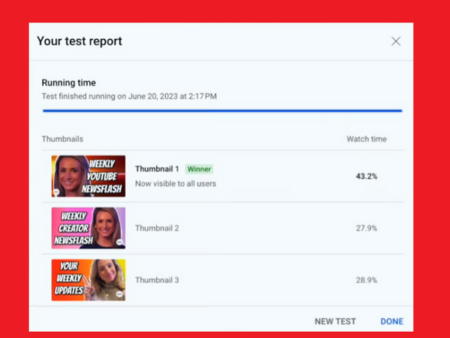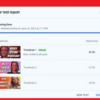Smm
Another day in the wacky world of Elon Musk’s Twitter, and today, Elon has both killed off a plan to add a secondary, ‘official’ gray tick, to complement the blue checkmark for certain Twitter accounts, while he also met with key advertisers in an effort to calm their concerns about the future direction of the app.
Honestly, it must be exhausting for Elon to go back and forth so often, but I also think that we’re now starting to get a better understanding of the process here, the method behind the perceived madness of his approach. That this is, actually, all part of a plan, no matter how misguided that plan may seem.
In a TED Talk back in 2014, Elon Musk explained how he approaches problems, and why he’s been so successful at finding alternative solutions, which many have overlooked.
As explained by Musk:
“Well, I do think there’s a good framework for thinking. It’s physics. You know, the sort of first principles reasoning. What I mean by that is, boil things down to their fundamental truths and reason up from there, as opposed to reasoning by analogy. Through most of our life, we get through life by reasoning by analogy, which essentially means copying what other people do with slight variations.”
The fundamental concept here is that we’re often too reliant on what’s already happened, what’s been done, as a marker of what will come next, which can blind us to the opportunities that are right in front of us, because we think that we already know the outcome.
When you view things from this perspective, the chaos that Musk has overseen so far at Twitter makes a little more sense. Rather than listen to the many commentators that have seen social platforms try things like subscriptions in the past, and fail, or even take the past history of social platforms into account, Musk has approached things with a more blank slate view.
‘What would happen if we did charge for a blue checkmark?’
Of course, I, like almost everybody else, think that this proposal won’t work, based on precedents like Twitter Blue, or Facebook’s past explorations of charging for the app. But Elon Musk doesn’t look at things the same way, and that’s how he’s solved some of the biggest technological problems at his other companies.
And when you consider this, the whole Elon persona, and approach, makes more sense.
Elon himself has essentially flagged this today, noting that:
Please note that Twitter will do lots of dumb things in coming months.
We will keep what works & change what doesn’t.
— Elon Musk (@elonmusk) November 9, 2022
Giving everyone blue checkmarks, with no ID verification, has already led to various cases of misinformation and deception, within hours of the option being launched – which, in fairness, Twitter has snuffed out pretty quick. But this seems like only the start, as there’ll be many, many ways that scammers will look to use this as a means to dupe people, while the amount of users that are likely to pay for a blue tick is probably not enough to even make it worth the effort.
But again, I’m viewing this with history as my guide – I’m looking at it based years of analyzing social networks, and the lessons that the platforms have learned in the past, which guides my view of what I expect to be the outcome.
That’s not how Elon Musk works, and the more we see of his approach, the more this is coming into perspective, potentially flagging what we can expect.
Another aspect to consider in Elon’s Twitter approach is promotion, and his unique approach to getting attention.
It’s notable that Tesla, Elon’s main company, doesn’t pay for advertising, and never has, and a big part of the reason why it doesn’t is because having Elon Musk as its front man is actually just as valuable as paying for ads.
Because he loves attention, and he knows how to get it – which, in the end, means that he doesn’t need to pay for it, because the media comes to him.
In the same vein, Elon knows that he can generate huge interest and attention simply by tweeting crazy things. For example, based on internal data (which Musk shared this week), Twitter engagement is actually on the up since he took over at the app.

Watching this unfold, I can now see that this could all, potentially, be a part of his bigger plan, which means that Musk will keep tweeting out his usual outlandish, attention-grabbing stuff, then let each comment percolate among the media, effectively promoting Twitter in the process.
Then he’ll just abandon the dumbest concepts, as he says, shrugging them off as random late-night thoughts.
At the same time, Musk will continue to hold meetings like today’s chat with ad partners, where he’ll walk back his most galling comments. Within this, he’s effectively saying ‘yeah, I say a lot of random stuff, which is actually really good for the platform’s numbers, but in reality, I’m not going all-in on extreme hate speech, etc.’
That balance will get difficult when his fans start calling on him to enact a more free speech approach, in line with his public statements. But maybe, this is the process, balancing various spinning plates by working to appease as many sides as he can.
Random class warfare tweets, then calming ad exec meetings. Supporting ‘free speech’, then meeting with the Chinese Government to address their concerns.
On balance, this does still seem like an untenable status quo. But what we’re seeing is similar to Trump’s approach to the app, flooding the zone with his ‘off the dome’ comments, while working at the other end to build the business.
And again, as Musk himself notes, some of these ideas won’t work. But he’ll try them anyway – because why not?
Sure, people are gonna be annoyed about his $8 per month ‘verification’ proposal. But if they don’t like it, they don’t pay, then Twitter scales it back at a later date – or even more likely, reverts back to the original system once it’s clear that not enough users will pay (still betting on this being the most likely outcome).
Then what happens? Twitter usage reverts to normal, with maybe a few more people paying for subscriptions. Then Twitter will release some other subscription offering, which is maybe slightly better, maybe worse. Some people will pay, others won’t, and we’ll all debate the logic of Elon’s latest crazy move, effectively keeping Twitter and Musk in the news.
And despite this being a messy process, and all out in public, it may well help to maximize Twitter promotion, and keep more people coming to the app to join in the chaos, as Musk and Co. continue to try out new ideas.
Basically really, the risks are may not that high – so long as Musk doesn’t cut off users wholesale or completely tank the reach of every tweet from every non-paying user (which Musk has discussed, and could still happen), or open the floodgates to all kinds of hate speech that could have dramatic impacts on the app.
Which he has suggested he will do. But he hasn’t done it yet.
Elon also knows that advertisers will come if usage increase, and while the associated brand risks could still be significant, it’s starting to become a little clearer that there’s a distance is between what Elon Musk says and what Elon Musk does in reality.
And in a year’s time, Twitter will probably look very much like what it does right now. Whether it makes more money, though, is the key query for Elon’s new team.













